Peri-Implant Diseases
Similar to natural tooth, a dental implant is susceptible to acute/chronic inflammatory process like gingivitis and periodontitis. Peri-Implant Mucositis is similar to Gingivitis in which only the soft tissue (gingiva) is affected. Once the disease progression has gone to the next level, it’s officially diagnosed as Peri-Implantitis, which indicates the loss of hard bone tissue.
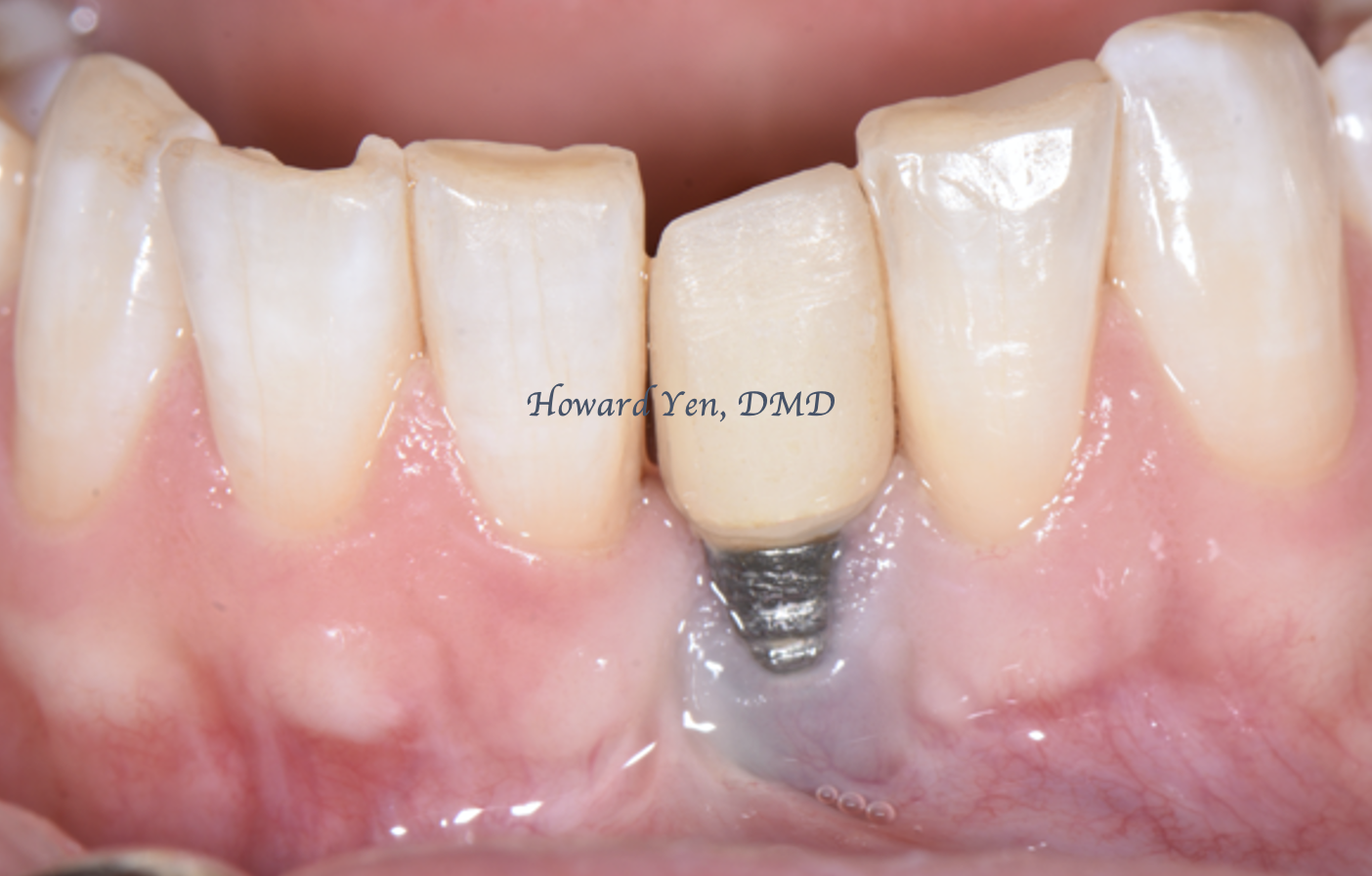
Receding gum on implant surface, minimal attached gingiva, difficulty in hygiene care, discomfort/sensitivity in brushing/cleaning.
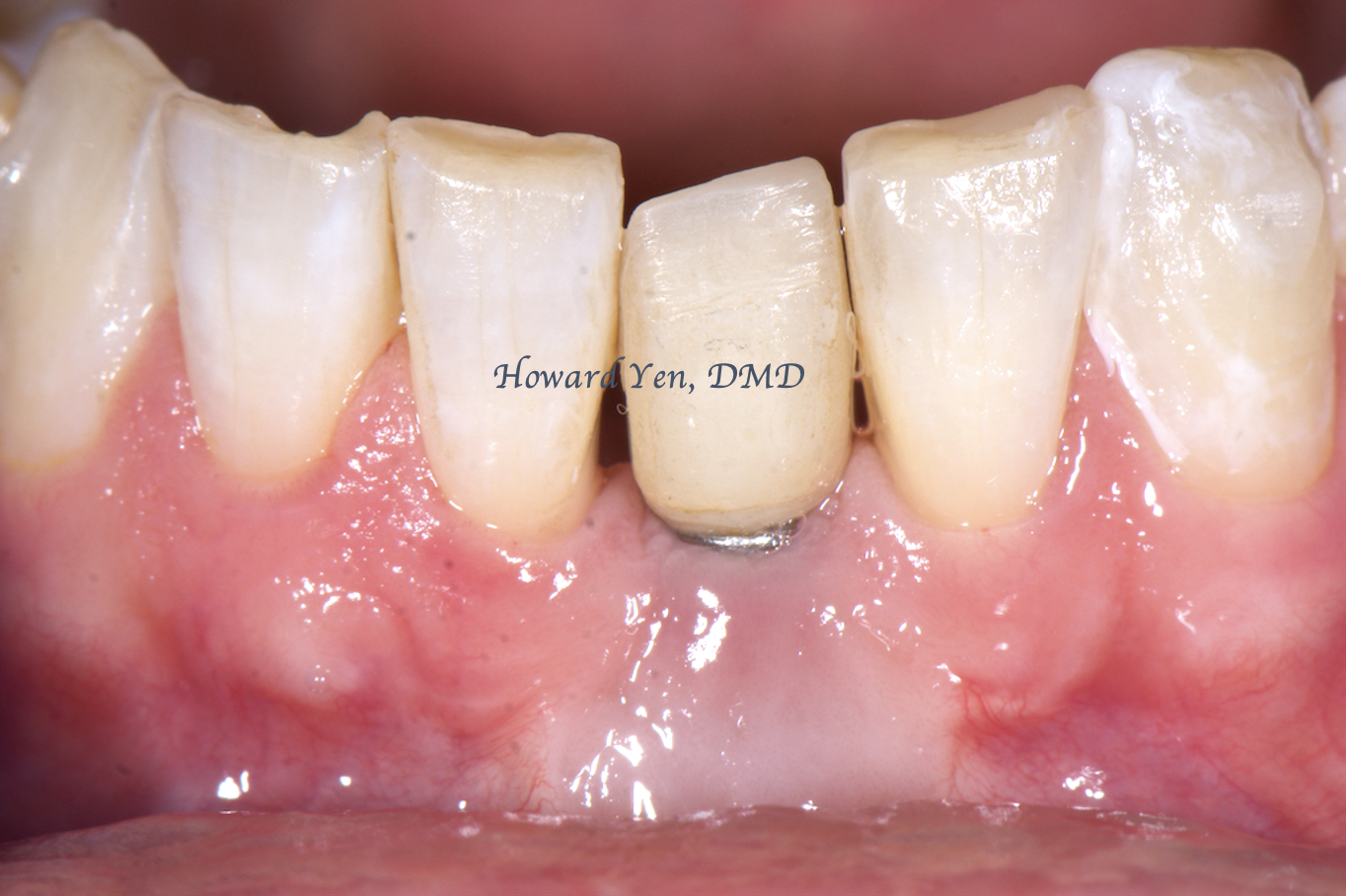
Significant reduction in exposed implant surface, improvement in gingival tissue width, improve accessibility in oral homecare therapy, improvement in discomfort/sensitivity level.
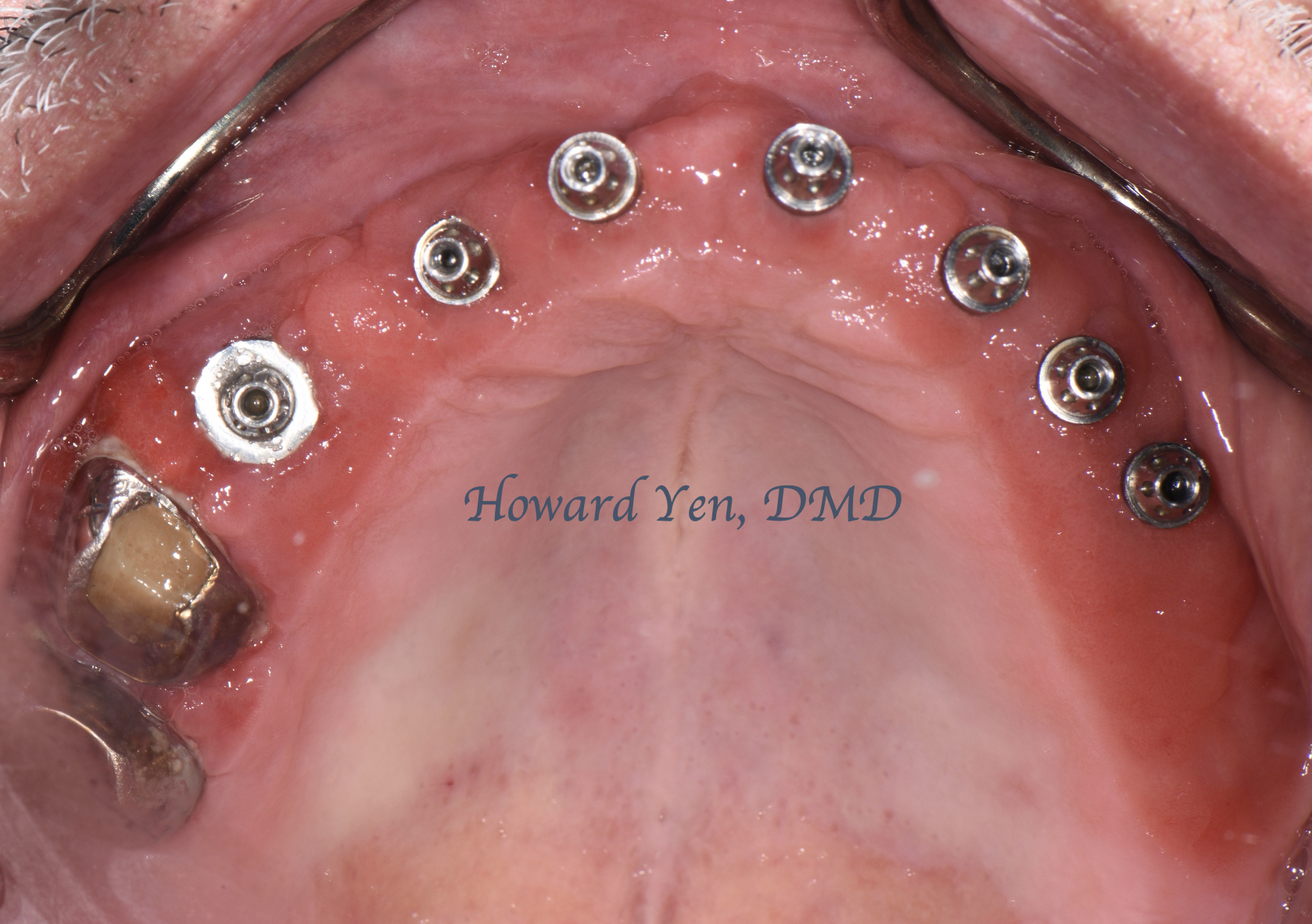
Peri-Implant inflammation due to inaccessible dental prosthesis design.
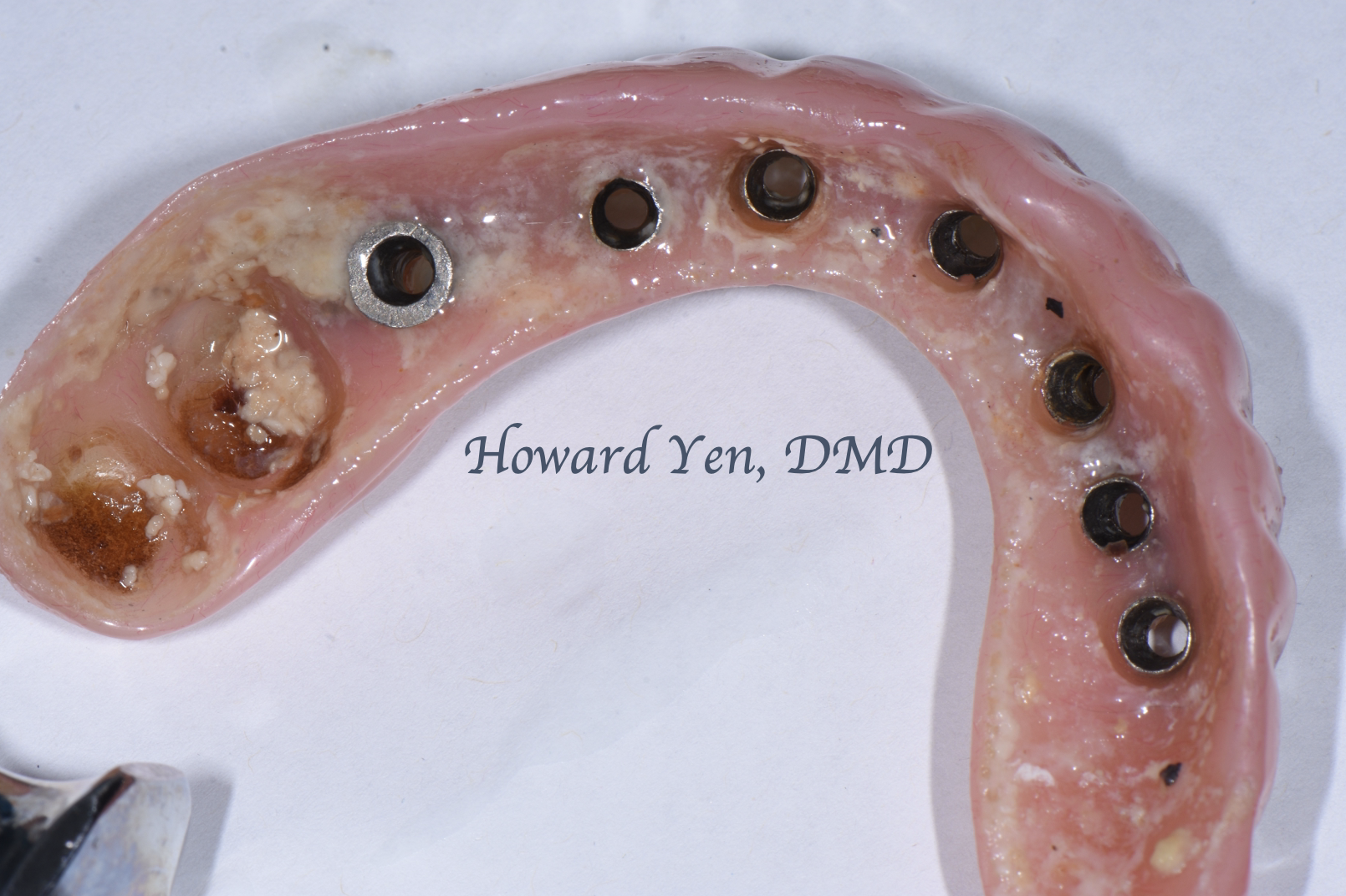
Poor dental prosthesis design inhibits adequate plaque control.
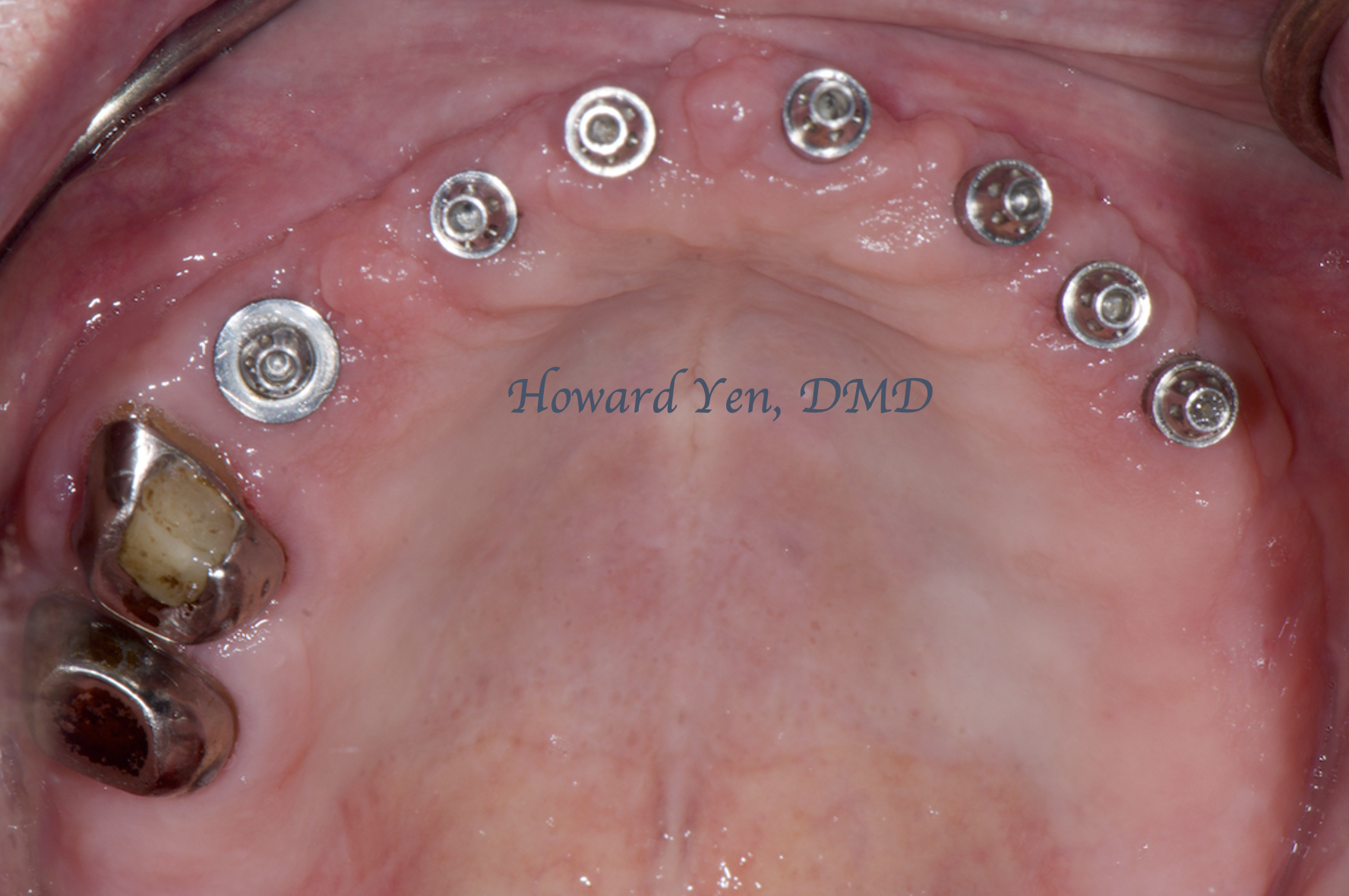
Modify the existing dental prosthesis design to allow proper daily oral homecare therapy by patient. Significant improvement in the level of inflammation.
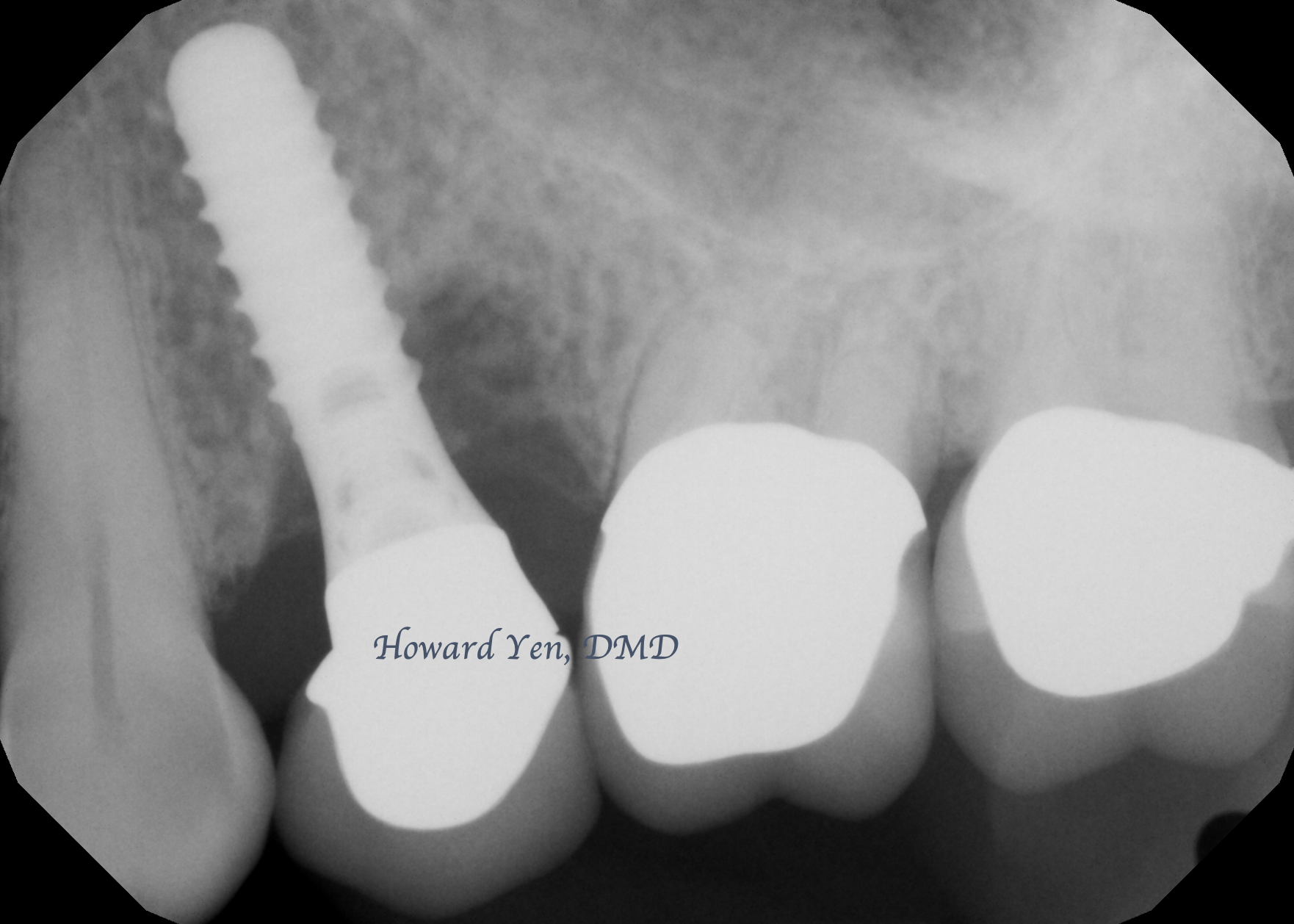
Peri-Implantitis with significant bone loss, tissue swelling, suppuration and bleeding.
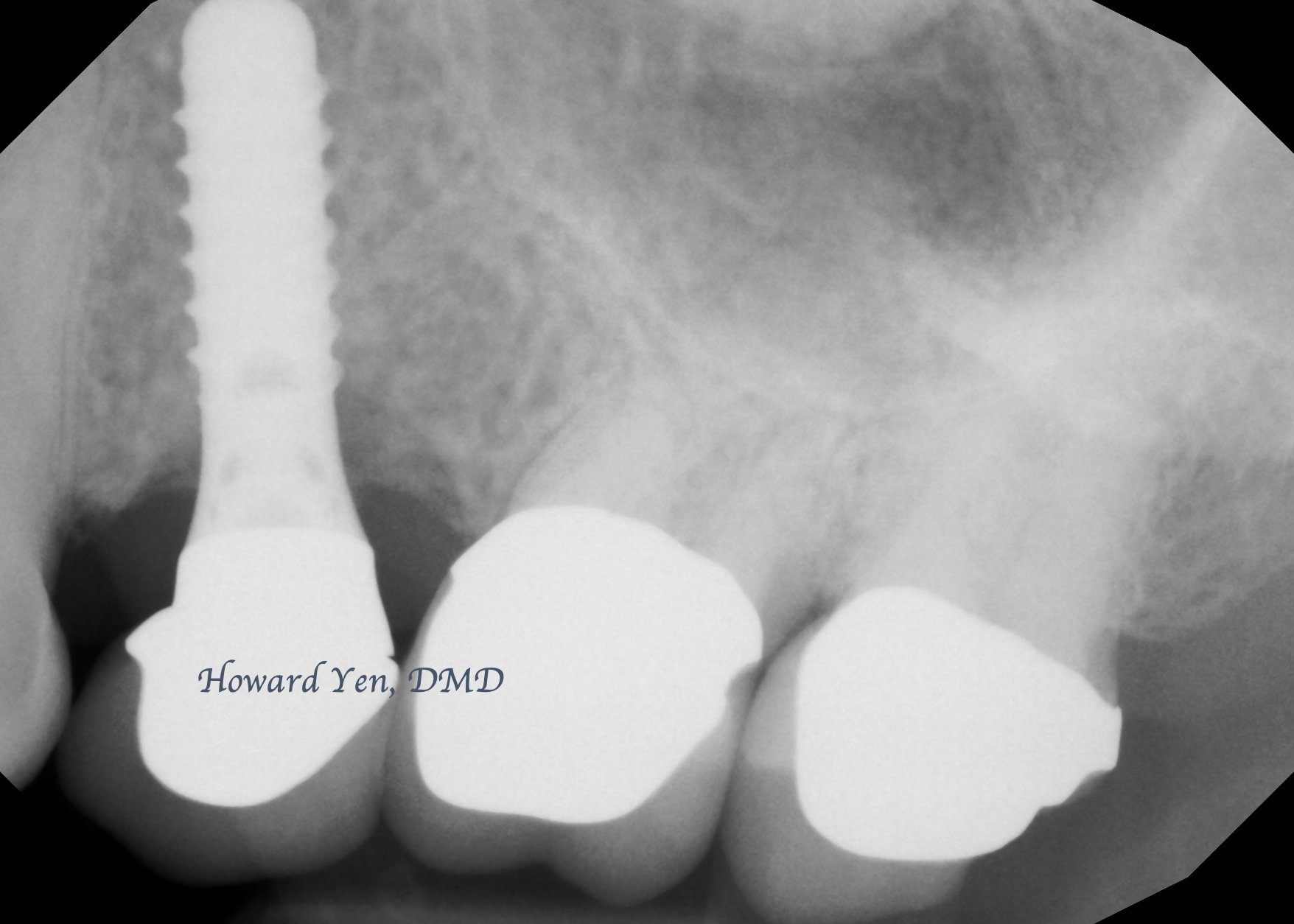
Successful management of peri-implantitis via conservative non-surgical therapy. Resulting in radiographic bone fill. Improvement in clinical signs of inflammation.
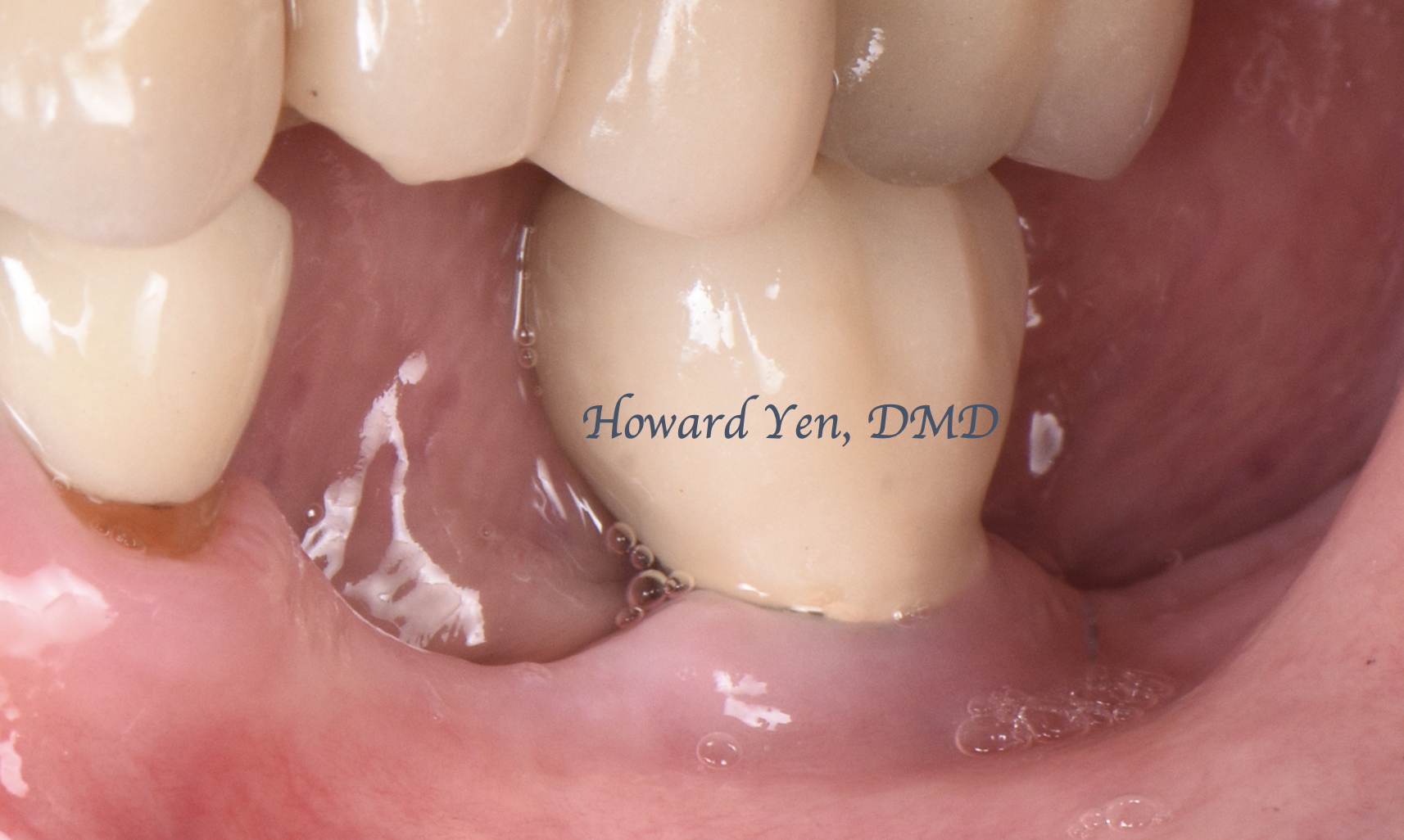
Clinical signs of inflammation with swelling of gingiva, bleeding and suppurations (pus).
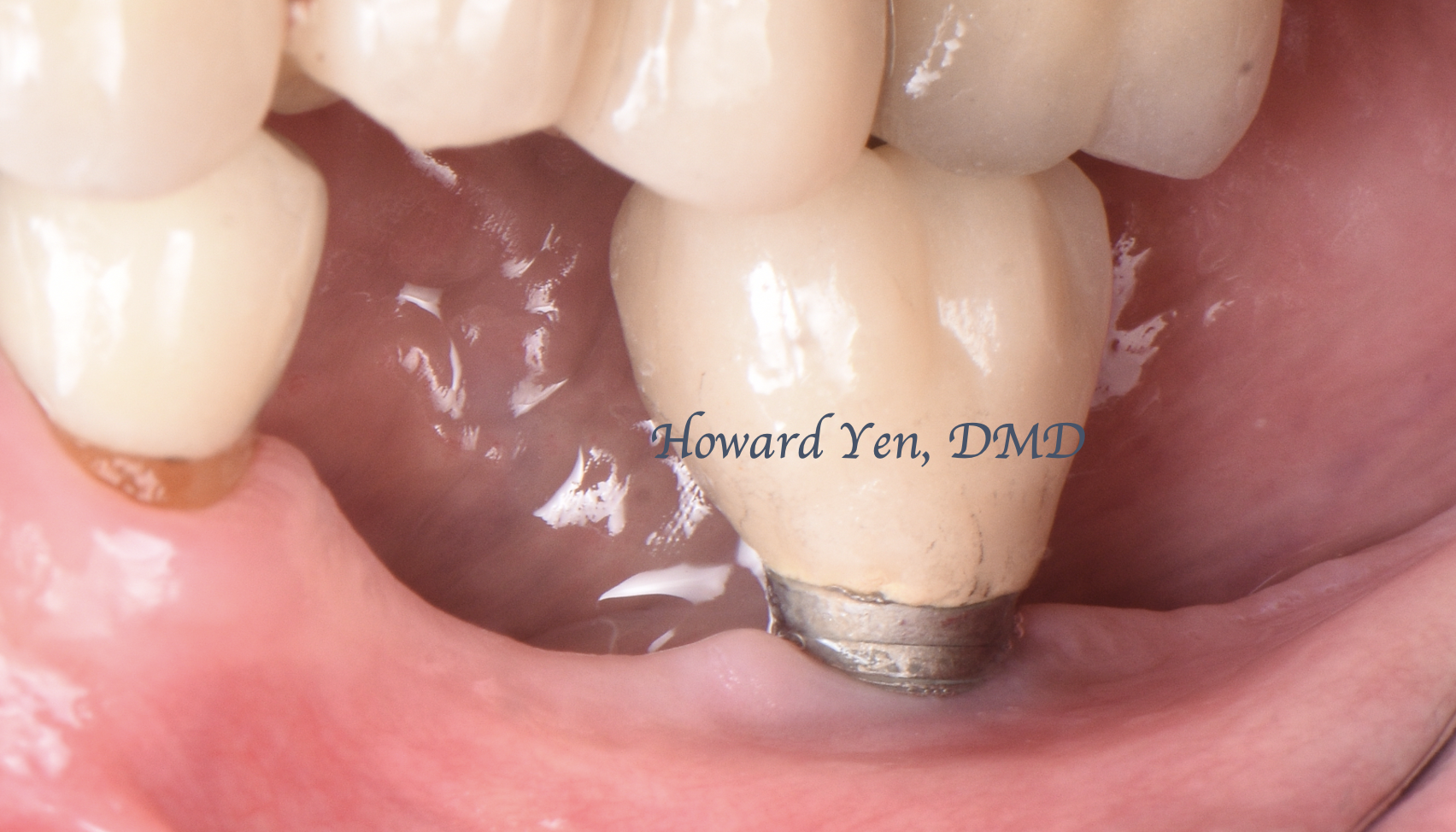
Successful reduction in clinical signs of inflammation with reduction of gingival swelling and improvement in bleeding and suppuration after non-surgical therapy.
